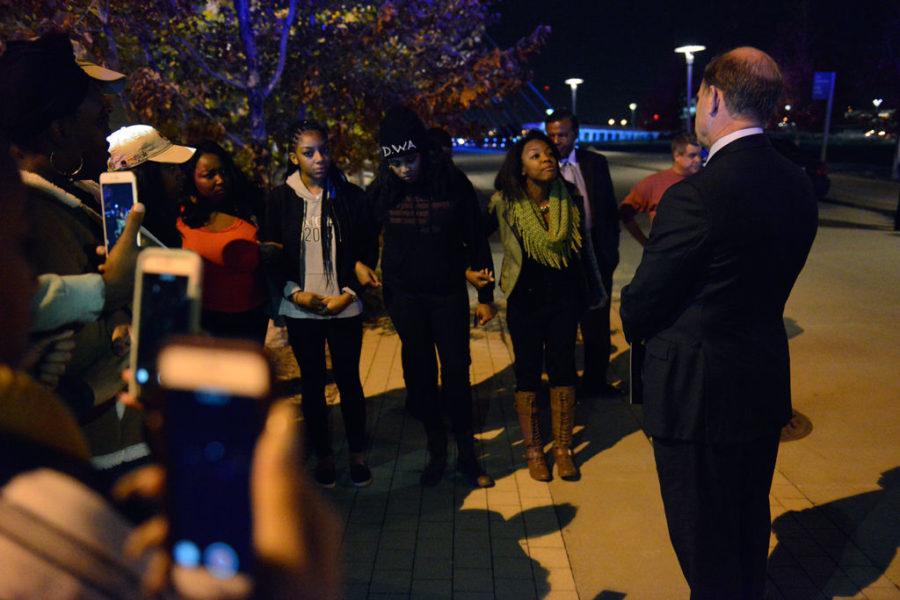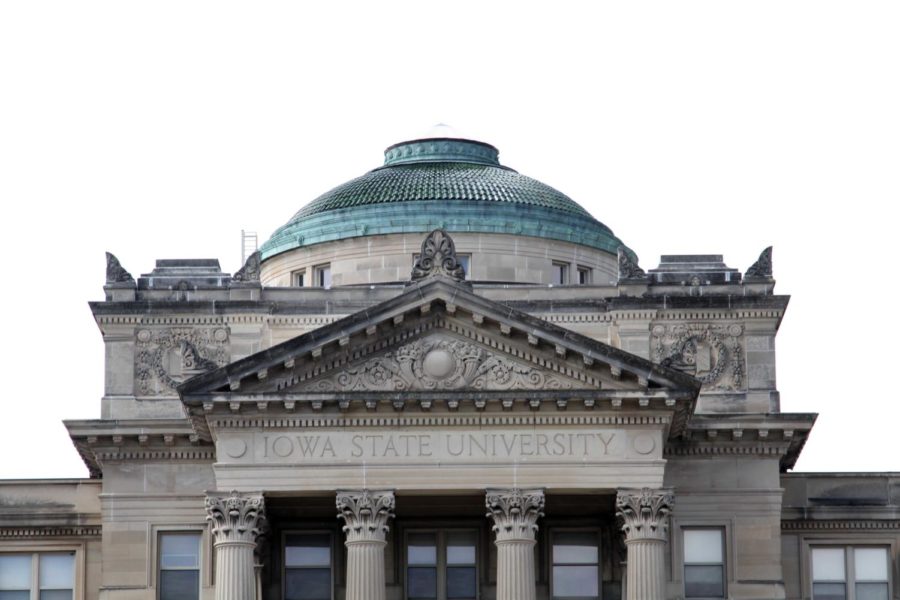Editorial: Mizzou protesters misstep in blocking media
Students from the Concerned Student 1950 group record video on their smartphones as they confront UM System President Tim Wolfe outside of the Kauffman Center in Kansas City, Mo., Friday night, Nov. 6, 2015.
November 10, 2015
The University of Missouri’s flagship campus has received a lot of media attention lately. Its president and chancellor resigned because of pressure from students, faculty and athletes, and the coverage has come in floods.
Now, the very news coverage that helped the Mizzou community accomplish its goals is also the same news coverage it is trying to block.
A video released Tuesday shows a perimeter of protesters blocking media from entering a tent city students had set up on the central quad of the campus. In the video, student photojournalist Tim Tai attempts to take photos of the event. Protesters can be seen blocking his way, telling him to leave, putting hands in front of his face and camera and even physically pushing him back. Melissa Click, assistant professor of communication at Missouri, is shown pushing a camera and asking for “some muscle” to help remove the journalist from the area.
The events during the last few weeks at Mizzou have no doubt been important to the discussion of how racism is dealt with on college campuses and how such actions reflect the racism in this country overall.
However, this should not be used as an opportunity to wage a war against the media.
News organizations are responsible for documenting history and are expected to share the true accounts of events and stories of the people involved. It’s how a democracy keeps a watch over the government to help people make the most informed decisions at the voting booth and ensure people’s rights are upheld.
Current students may not be thinking about this, but future students, who may at some point need to fight a similar fight, will look back on all of the reporting done on this event for reference.
The resignations the groups wanted to see was in part accomplished because of the national attention and pressure the media shared with a broader audience.
“I am documenting this for a national news organization,” Tai told protesters, also saying, “the First Amendment protects your right to be here and mine.”
Tai was well within his rights to be at the protest — which took place in a public space — to document the event. He should be applauded for the way he handled the advancing protesters. And what he was trying to do, which was to document the events occurring that day, was mimicked by several around him, who were taking videos with smartphones and sharing it on social media platforms.
It is completely understandable why students and others involved wanted privacy. It can be difficult to trust a complete stranger of the media with such a personal story without skeptics on if that person will accurately share that story. They’ve been fighting for their rights and equal treatment for years. The students and others who joined their fight should also be applauded for their dedication in accomplishing their goals.
However, if they wished to have the privacy some spoke of in the video, they should not be stationed in a public space after weeks of national media attention has put a spotlight on their campus.
Campuses around the nation are watching Mizzou. They are watching how its students, faculty, staff and administration respond to the situation. What is happening at Mizzou is not an isolated event. People will be looking back on this as part of this country’s shift in attitudes toward people of different cultures.
And no one would know about it without the media’s presence.

















